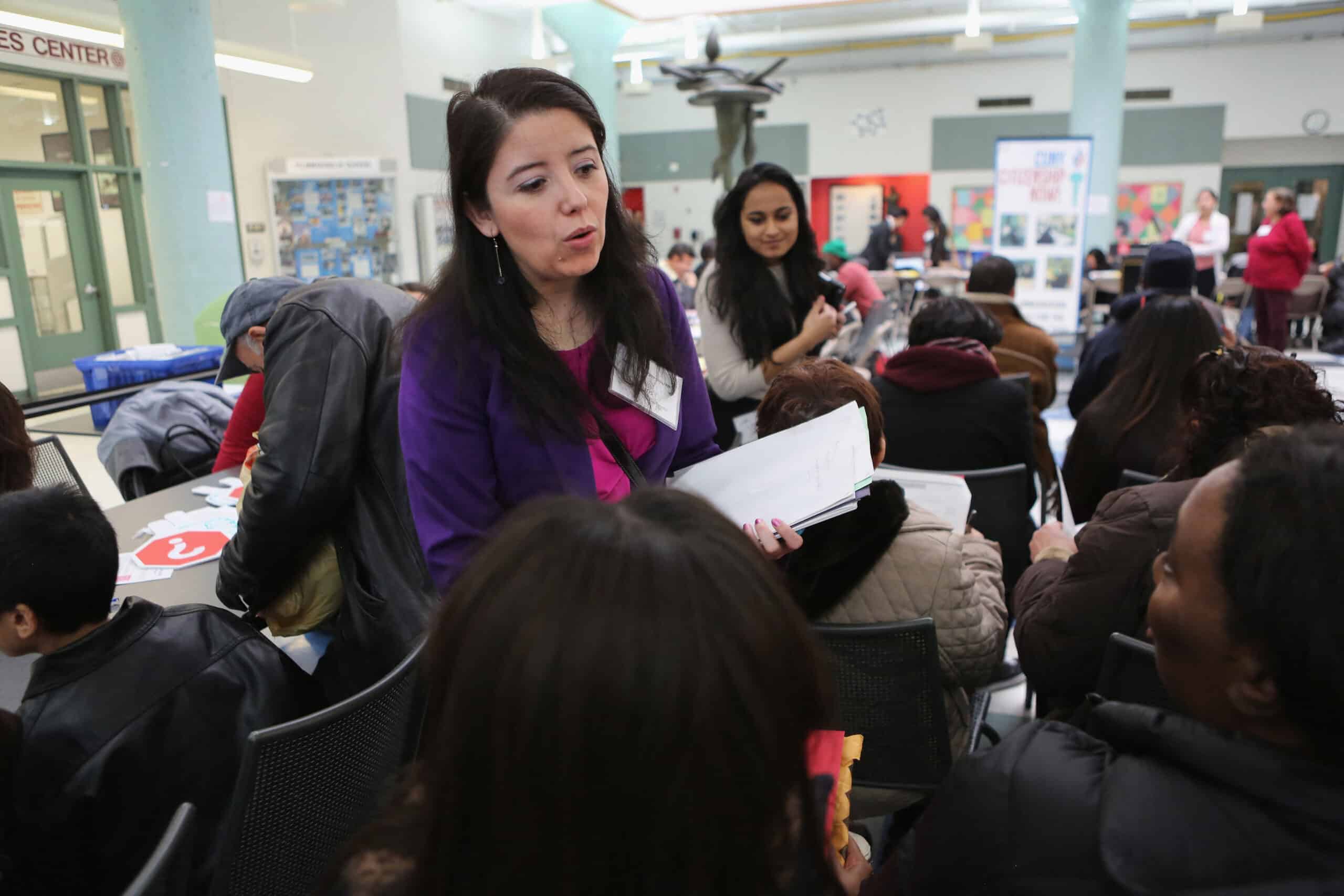
If you’ve just finished high school – or are on the verge of finishing –, congratulations! You’ve made it through your teenage years, and are now ready for the next big step.
When it comes to the topic of how to apply for university, you may be feeling unsure or conflicted.
Understandably so, because it’s one of the biggest, most nerve-wracking decisions you have to make. Your future depends on the choices you make now.
Even if you’ve decided on a career you want to pursue, you might not know how exactly what to do.
Let’s say you want a degree in marketing, but you’re unsure of which aspect you want to focus on – advertising, digital marketing, public relations, content creation, and so much more.
And then there’s the question of which industry you want to go into in the future, such as agencies, news portals, sales and so on.
Coupled with these questions, you may even struggle to pick a university because you’re uncertain which one offers a better or more flexible course.
And even though a degree from the US, UK, Canada and Australia all sound great, it’s hard to pick only one.
Some students from lower-income families also have to consider which institute offers better student financial support and scholarships.
With so many options and so many factors to consider, what’s a barely out-of-high-school student to do?

A university student wandering through the crowd. Source: AFP
Everything you need to know before applying to university
1. Choose where and what you want to study
It goes without saying that you should decide where you want to go, and what you want to do. Will you be studying at home or abroad? Do you have plans to continue to a master’s degree? Are you looking for programmes that offer flexible electives and courses? Do you prefer practical training over theory-based courses?
A helpful tip would be to note down what you’re looking for before starting your research. Visit university open days, go on campus tours and make a list of questions for counsellors and students present.
If a physical campus matters to you, checking out what the campus has to offer should be an essential part of the research process.
More than 1.3 million students across and outside the UK use UCAS to search for information, advice and guidance on higher education, employment and apprenticeships.
Students can filter universities based on courses, qualifications, and even if distance learning is offered from over 50,000 courses.
If you’re aiming for US colleges or universities, Common Application is a fantastic option.
The platform has over a million students who apply to over a thousand colleges and universities, research financial aid and scholarships, and connect to college counselling resources annually.
Want to study in Europe, China, Australia, and beyond? General university application guidelines may differ from country to country, or even between institutes.
Make sure you look into what the university provides, what the programme includes, or what financial aid is offered.
Talk to university counsellors, alumni or students from the course you’re interested in to learn more.

Students exploring their campus. Source: AFP
2. Check entry requirements
Depending on the university you apply to, there are typically entry requirements to fulfil before you send in your full application. These include:
- A general application with personal and parent/guardian information
- Previous academic transcripts from high school or other academic institutions
- Letters of recommendation about your academic ability
- Personal statements or admissions essays
- An entrance exam
- A background check
It’s important that you have everything in order.

Woman handing out applications. Source: AFP
3. Know your deadlines
Missing out on a homework deadline can feel bad. Missing out on a university application date feels way worse.
Some universities have different deadlines when it comes to applying for courses. Many applications must be completed in advance; some can be a month or two to half a year ahead of the course.
Various application processes also differ from institute to institute, and many colleges and universities require an admissions essay as part of the process.
Some universities also take it a step further by coming up with unconventional questions, as a way to test the limits and capabilities of a prospective student, and that may take a while to complete.
So always find out which deadline applies to the programme you’re interested in, and what exactly you need to complete beforehand.

A high school student pondering over his exam paper. Source: AFP
Why it’s important to know how to apply for university
The truth is applying to universities can be an expensive affair — and here are some statistics to put things into perspective:
- The cost of college has risen 1,000%+ over the past 30 years.
- For US students, the average undergraduate application fee is US$56. Postgraduate programmes charge US$66 per application on average.
- One high school senior says he is forking over US$1,700 for college, even before being admitted, CNBC reports.
Many universities charge you a non-refundable fee when you apply for one of their programmes – application fees can range from US$45 to US$75 but can go up to $150 for postgraduate programmes.
While it may not seem like much, it racks up, especially if you’re an international student.
Plus, there’s so much to do. Getting your application in involves a series of stages: do the research, narrow down your university choices, complete the applications, write essays, and then play the waiting game.
Knowing how to apply to university means you minimise the chances of your efforts going to waste and having to redo the same long process again.
And here’s another lesser-known but just as crucial reason to know how to apply to university: to avoid getting scammed.
University scams are more common than you think! There are scholarship and financial aid scams, misleading offers, and nonexistent apartments or accommodations.
Scammers usually target international students as they’re not aware of local rules, and a large amount of scams go unreported. Just in the US in 2021, 11,578 people lost US$350,328 due to rental scams.

Authorities speaking to a student who fell victim to a scam. Source: AFP
How to apply for university in the world’s most popular study abroad countries
1. UK
Applying for an undergraduate course in the UK is simple — all you need to do is register and apply to UK universities and colleges through the Universities and Colleges Admissions Service (UCAS).
You first have to register in the UCAS Hub and complete the registration questions. From there, you’ll be taken to the UCAS Hub dashboard to fill in your application details.
Apart from picking programmes and universities, you’ll have to submit one personal statement of at least 1,000 characters long.
Postgraduate programmes in the UK have their specific entry requirements and application process, so do check the individual course websites for instructions on how to apply.
Have questions about UCAS? Click here for more information.
2. Australia
The country does not have a centralised application system, so you’ll have to apply to each university directly as an international student, either online or by post.
Some documents you may need include academic transcripts, course preferences, and, if applicable, a summary of your employment experience.
You usually won’t need to write a personal statement or personal essay, but you may be asked to outline why you wish to study in Australia when you apply for your student visa.

One big advantage of studying abroad in the US is the flexibility in selecting your major. Source: AFP
3. US
While you can usually apply directly through the university’s website, you can also apply through Common Application.
It’s an undergraduate college admission application that applicants use to apply to over 1,000 member colleges and universities in all 50 US states.
The best part? It’s free to use the Common Application.
4. Canada
Most Canadian universities accept online applications, where students send them through the official website or a centralised application system.
A centralised application system for Canada includes the Ontario Universities Application Centre (OUAC) or ApplyAlberta.
The application form typically requires your personal information, academic history, and programme selection.

New Zealand is world-famous for its friendly people, spectacular landscape, and relaxed lifestyle. Source: AFP
5. New Zealand
Applications for higher education in New Zealand are made directly to the universities you want to study at.
For example, if you want to apply to the University of Otago, head to its Application Page, where there’s a step-by-step guide for you to select a major, before you’re taken to eVision, your personalised application portal.
6. Singapore
Like New Zealand, applying to a university in Singapore is made directly with the selected institution.
To apply to Singapore Management University, for example, you start by creating an account on its Undergraduate Admissions page.
You only need to pay 15.00 Singapore Dollars (inclusive of GST), approximately US$11.20 at the time of writing.

The Chinese government has doubled its efforts to increase the scholarships it offers international recruits. Source: AFP
7. China
To apply to a university in China, you can register directly through the official website of the university or through CUCAS (an online registration system that allows international applicants to apply for admission to a specific university degree in China), which allows you to enrol in any Chinese university.
CUCAS charges a service fee of at least US$50.
8. Hong Kong
There is no centralised application for international students in Hong Kong. You can apply to as many universities as you like, but be aware that you have to pay an application for each.
For example, to apply to Hong Kong University of Science and Technology, you start at its Online Application System page, which filters your application according to the qualifications you hold.
Application fee is 450 Hong Kong Dollars (approximately US$48) at the time of writing. You can pay using a Visa or Mastercard credit card.

Tasty food at student-friendly prices in Malaysia. Source: AFP
9. Malaysia
Most universities accept applications directly since there is no centralised application system. You can either apply online or meet with a course advisor.
Taylor’s University, for instance, has its own Taylor’s Online Programme Application System. You can complete your application anytime and from anywhere.
Application fee is approximately US$700.










